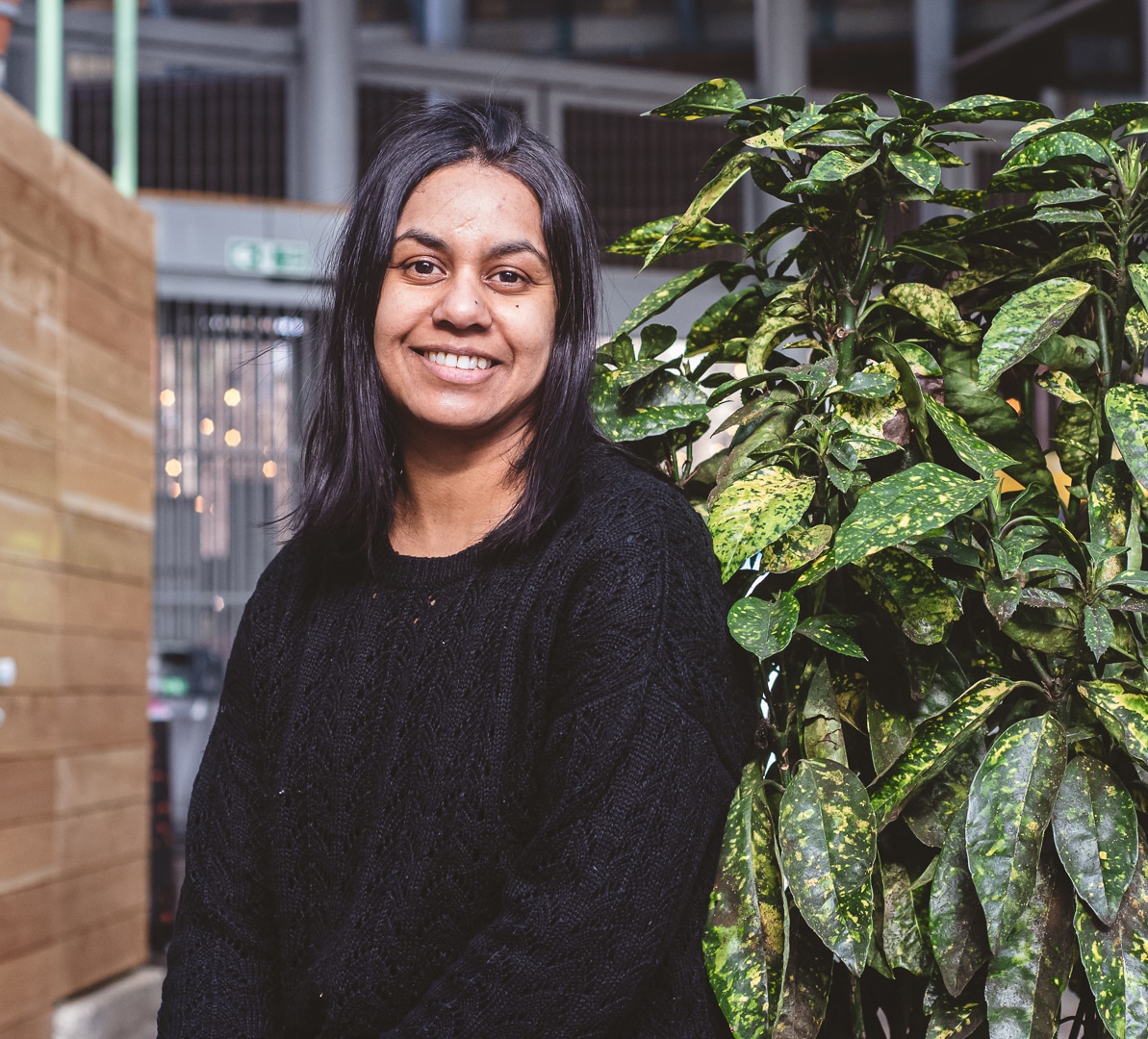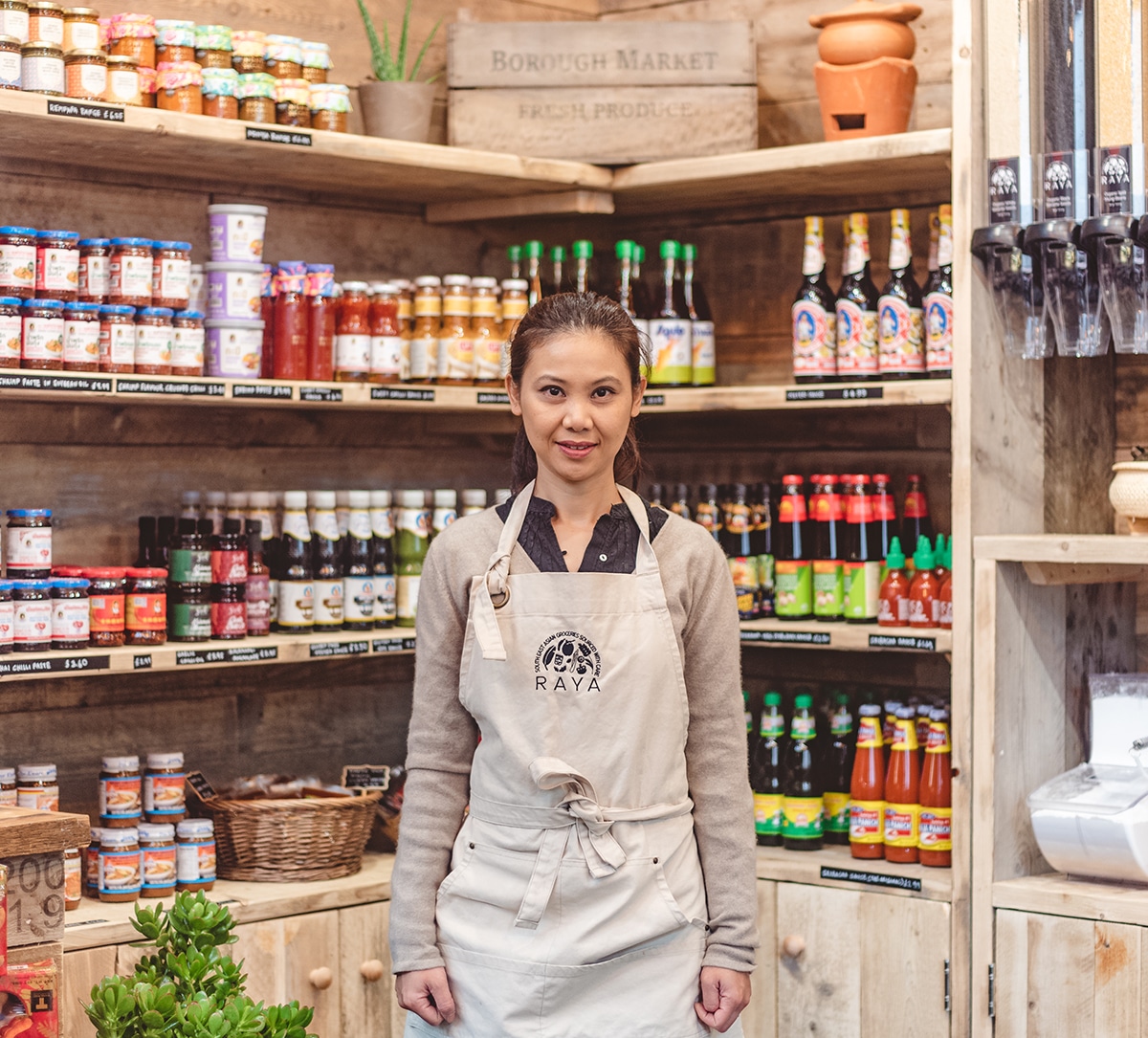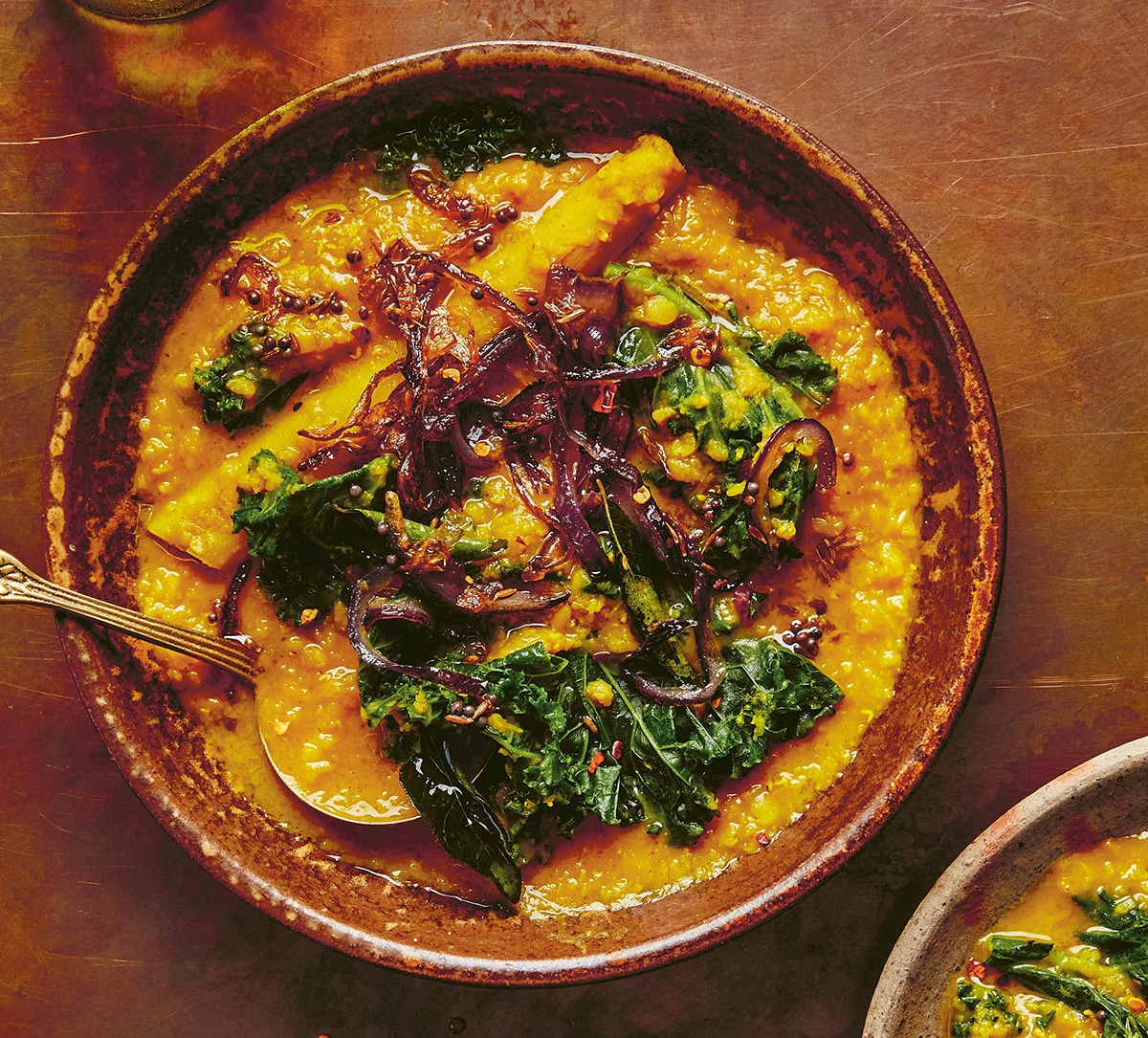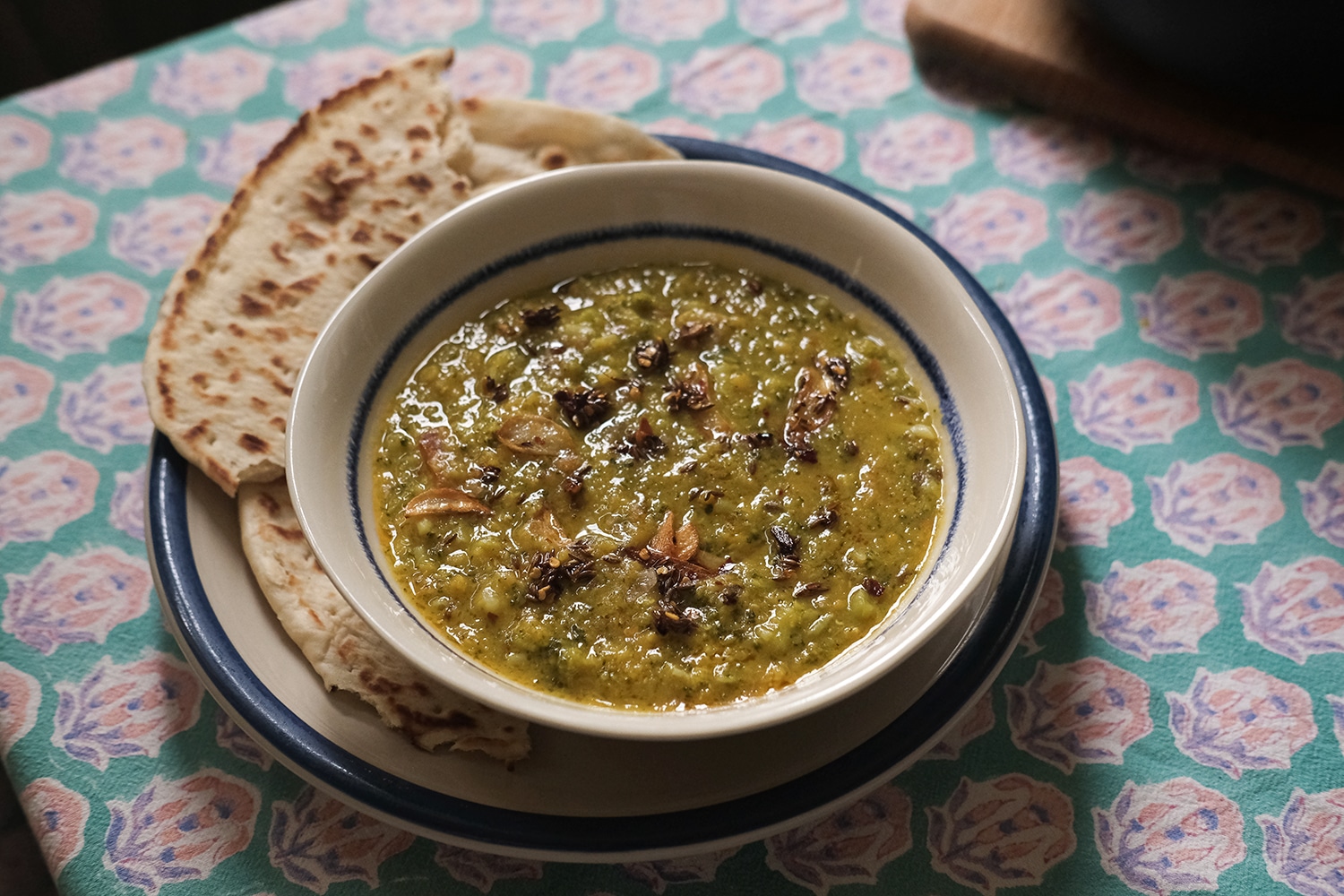Dal dhokli
A comforting, warming Gujariti dish for a chilly English Diwali, from the owner of Gujarati Rasoi


Recipe Meta
Prep
20 mins
Cook
1 hour
Serves
4
Difficulty
Medium
Ingredients
For the dal
- 250g toor dal (pigeon peas)
- 3 tsp grated jaggery (or soft brown sugar)
- 15 redskin peanuts
- 1 tbsp coarsely grated coconut
- 3 pieces of dried mangosteen
- 3 green chillies, finely chopped (with seeds)
For the masala
- ¾ tsp ground coriander
- ½ tsp ground cumin
- ¼ tsp turmeric
- ¼ tsp garam masala
- ½ tsp finely chopped green chilli (with seeds)
- 2 tsp finely grated ginger
- 10g salt
- 1 dried red chilli
- ½ tsp mustard seeds
- ½ tsp cumin seeds
- A pinch of asafoetida powder
- 8 curry leaves
- 10g fresh coriander, roughly chopped
- 200g cherry tomatoes, quartered
- 1 tbsp tomato puree
For the dhokli
- 170g chapatti flour
- 45g gram flour
- 45g rice flour
- A small pinch of garam masala
- A pinch of turmeric
- 1 tsp sesame seeds
- ½ tsp fine salt
- 2 tsp finely grated fresh ginger
- 1 tsp finely chopped green chilli (with seeds)
- A small handful of coriander, roughly chopped
- 2 tbsp olive oil
To finish
- 100g frozen garden peas, defrosted
- A knob of salted butter
- A small handful of coriander, roughly chopped
Method
Rinse the toor dal three times with cold water, then add to a large pan with 1.6 litres water, the jaggery and the peanuts. Bring to a gentle boil then simmer gently for around 30 mins, until you’re able to completely squish the dal between your fingers.
While the dal is cooking, make the masala. Place the ground coriander and cumin, turmeric, garam masala, ginger, green chilli and salt into a bowl and set aside.
In another pan (one with a lid close to hand), add a little olive or sunflower oil and the dried red chilli and place over a medium heat. When the chilli starts to brown add the mustard seeds – allow them to splutter with the lid on until the popping subsides. Quickly reduce the temperature to a low / medium heat and add the cumin seeds, asafoetida and curry leaves.
When the cumin seeds have browned a little (do not over-brown or they’ll turn black when cooked in with the dal), add the fresh coriander – this will cool your oil down and prevent the spices from burning.
Now add the bowl of ground spices and cook for 30 seconds, long enough for the spicy aroma to release. Before the mixture catches or starts to dry out, add the tomato puree and fresh tomato and cook until the tomato breaks down. You have made your masala!
Add the masala to your dal with the coconut, dried mangosteen and chopped green chillies. Simmer for 15 mins – you may need to top up with water to keep it from burning. Now taste it: you’re looking for a balance of savoury, chilli, sweet and sour.
Set the dal aside while you make your dhokli. Begin by putting all the ingredients in a bowl. Add approximately 80ml of very hot water and mix thoroughly with a wooden spoon so as not to scald your hands. Then, as it cools, use your hands to form a dough, making sure all the ingredients are kneaded through evenly. The dough should be a little sticky to begin with, so keep kneading until it has absorbed the water and comes away easily from the sides of the bowl. Cover the dough and rest for 5 mins.
Divide the dough into four equal smooth balls. Dust a wooden chopping board with chapati flour, then, using a rolling pin, roll each of the balls out into even circles approximately 2mm thick. With a sharp knife, cut each circle into 3cm strips, then turn the chopping board 45 degrees and cut again at the same intervals to create diamond shapes.
Return the dal to a low / medium heat and bring to a gentle simmer. Place the dhokli into the dal one piece at a time, leaving a 2-3 second interval between each one to prevent them from sticking together. Don’t drop them on top of one another either – use the whole pan.
Stir the dal gently to make sure it’s not catching at the bottom. Add the peas and cook for 5-8 mins. Adjust the consistency with boiling water if needed – I like mine to be the thickness of single cream. Serve with a knob of salted butter on top and a coriander garnish.
Image: Sandhya Hariharan (Sandhya’s Kitchen)



